15+ Places to Visit in Nairobi, Kenya
January 9, 2023
Nairobi, the bustling capital city of Kenya, is a hub of culture, history, and natural beauty. From wildlife sanctuaries to museums, art galleries, and cultural landmarks, Nairobi has something to offer every traveler. If you’re planning a trip to Nairobi and wondering where to start, look no further.
In this article, we have rounded up 15+ of the best places to visit in Nairobi, Kenya, from must-see attractions to hidden gems waiting to be discovered. Whether you’re a history buff, an art lover, or a wildlife enthusiast, this guide has covered everything you need to know to make the most of your visit to Nairobi.
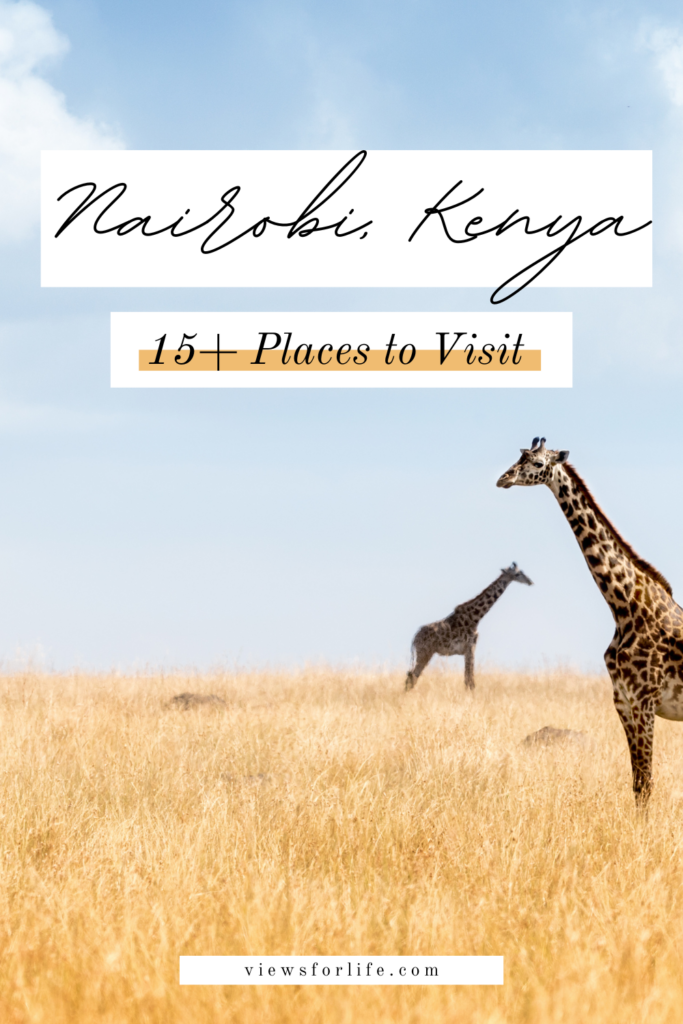
15+ Places to Visit in Nairobi, Kenya
About Nairobi
Nairobi is a city and county in the Nairobi Province, Kenya. The city and its suburbs form the Nairobi Metropolitan Region, which has an estimated population of 53.2 million. Nairobi is the capital and largest city of Kenya.
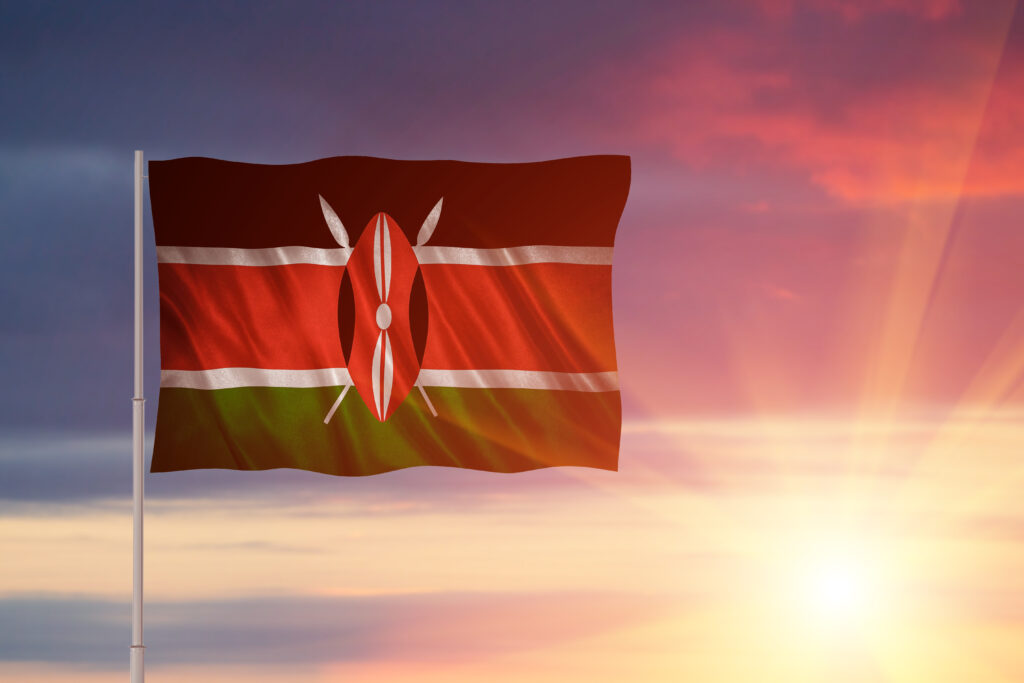
Nairobi is also the capital of Kenya’s Central Province as well as the headquarters for many national and international organizations, including the United Nations Environment Programme (UNEP), UN-Habitat, World Health Organization (WHO), World Bank Group (WBG) , International Criminal Police Organisation(INTERPOL), African Development Bank Group (AfDB), Standard Chartered Bank; Standard Chartered Insurance Company Limited, Equity Bank Limited, and more than 100 other companies.
Languages Spoken in Kenya
You might be wondering about the languages spoken in Kenya. Kenya’s population is over 40 million people, and its official language is English. However, Kiswahili is also widely spoken, as most Kenyans use it to communicate with each other.
The Bantu language family is Kenya’s most widely spoken language, followed by Cushitic, Nilotic, and Sudanic languages. So if you can’t speak any of the local languages when visiting the country, you can still communicate with locals easily!
Currency in Kenya
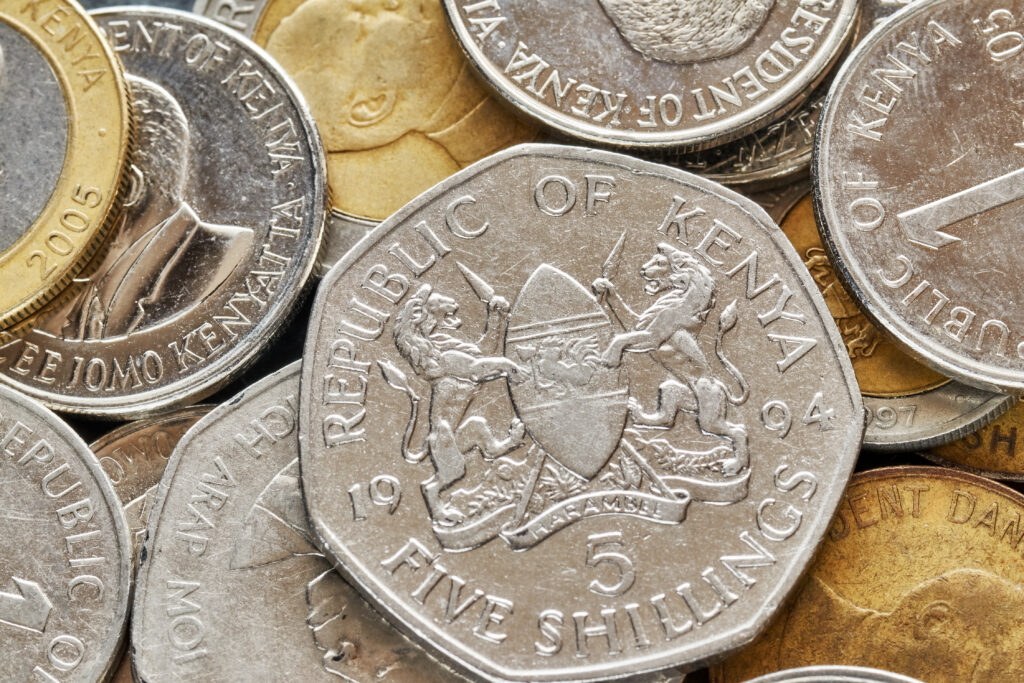
Kenya has a stable and growing economy, so exchanging your money there is safe. The Kenyan shilling is the currency in Kenya, but if you’re not planning on spending a lot of time there, you might not want to bother converting your dollars into shillings. The exchange rate is approximately 1 USD = 100 KES. ATMs are also available around town for those who don’t have time (or desire) to change their money at a bank or currency exchange.
How To Get To Kenya
The airport serving Nairobi is Jomo Kenyatta International Airport which serves as an important air transport hub within the East Africa region connecting various destinations across Africa like Dar es Salaam Tanzania; Johannesburg, South Africa; Lusaka, Zambia, among others.
You can fly to Kenya from many countries. Kenyan Air, Air France, KLM, and Lufthansa have regular flights to Nairobi. You can also travel by road or by train. The only ferry that travels between Mombasa and Dar es Salaam stops at Zanzibar Island en route, so you’d need an additional boat ride to get from Zanzibar Island to mainland Tanzania if you want to go there for any reason (the ferries going directly between Mombasa and Dar es Salaam do not stop at Zanzibar).
Why not try a sea journey if you don’t mind taking your time while traveling? If you are adventurous enough, there is a new way of traveling by boat that gives tourists the opportunity of experiencing different cultures along their trip by visiting coastal villages near Lake Victoria and Lake Tanganyika, where they will learn about different cultures and customs of people who live there while enjoying breathtaking views on both lakes which are among Africa’s largest freshwater bodies.
Visa Entry into Kenya
An e-visa is required for all visitors in advance for U.S. citizens. E-visas are issued electronically within 72 hours after submitting your application and cost $50; they’re valid for three months from the date of issuance. They can be on the Kenya e-visa website.
Getting Around Nairobi
Nairobi is a sprawling metropolis; the best way to get around is by car. You’ll be able to see more of the city that way. Uber and other ride-sharing services are available.
If neither of these options appeals to you and/or you want more freedom than being driven around by someone else, look into hiring private drivers who know the area well enough for sightseeing trips throughout Nairobi and neighboring townships like Karen and Langata Forest Lodge. If you’re staying in a hotel, they might be able to help set up a hire car. You can also rent your car at the airport or through an online service like Booking.com, which will deliver it straight from their storage facility in Nairobi (this option would be ideal if you plan on visiting multiple destinations within Kenya).
15+ Places to Visit in Nairobi, Kenya
Nairobi National Park
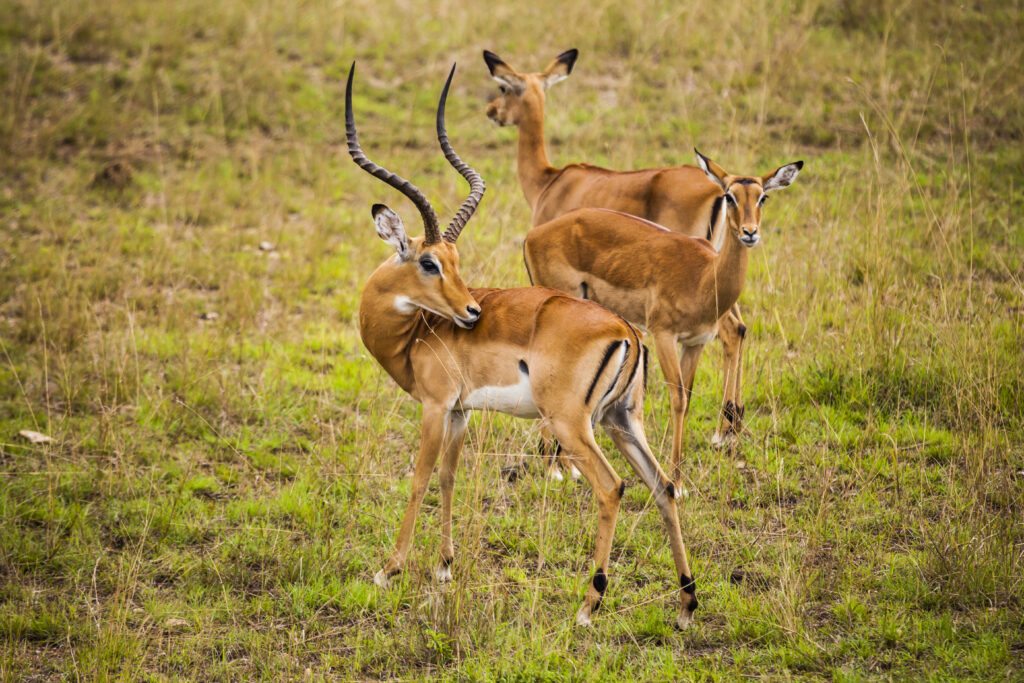
Nairobi National Park is Kenya’s oldest national park, home to some of the most unique and endangered wildlife. It is also the only national park in Kenya where you can see all five of Africa’s Big Five, including elephants, lions, rhinos, and leopards. The park offers a variety of activities, including game drives, walking safaris, and bird watching. There are also several picnic spots within Nairobi National Park where you can relax while viewing Mount Kenya or rest after an exciting day exploring this vast expanse of natural beauty.
If you want to make sure your trip includes seeing as much wildlife as possible on your trip in Kenya, then consider booking yourself onto one or two-night safaris through Nairobi National Park so that you can get up close with some amazing animals such as black rhinos, which were once thought extinct until their rediscovery during an expedition by local conservationists back in 1977!
The Bomas of Kenya
If you are interested in learning about the history of Kenya and its people, the Bomas of Kenya is a great place to start. The Bomas is a traditional meeting place for the Kikuyu people, who comprise about 20% of Kenya’s population. It was built in 1931 by King Kanyanta wa Gakure, also known as Mumbi or Nyamkake (meaning “mother of all things”).
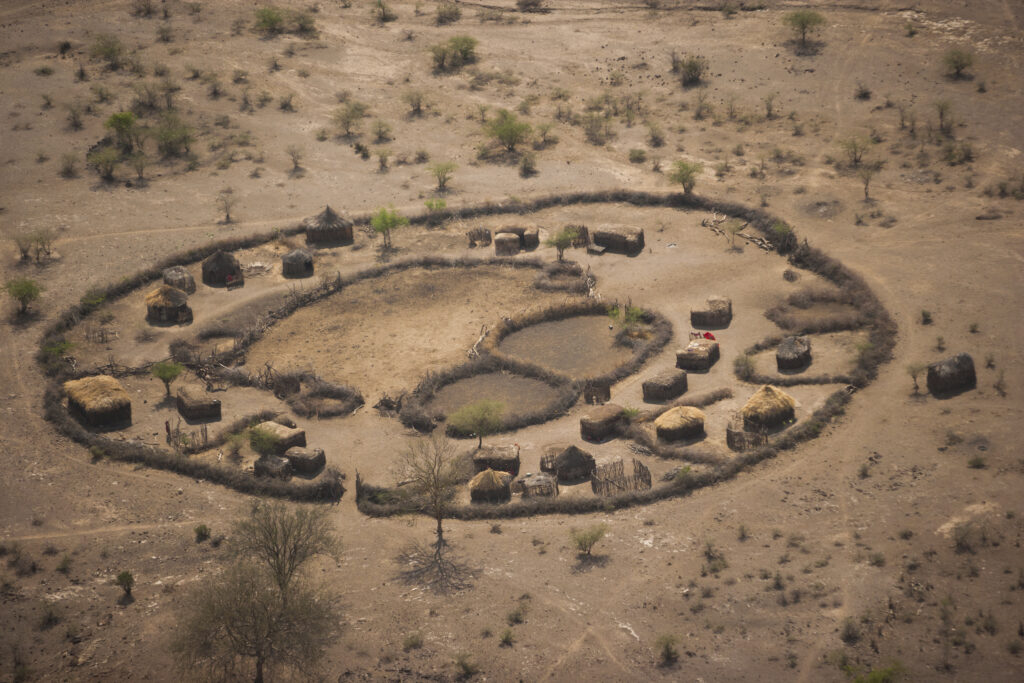
The Bomas overlooks Mount Kenya and features several traditional buildings that have been refurbished and are now used as museums or cultural centers. Some of these include:
The Kamati House—This building was originally constructed using local materials such as grasses and sticks; it now houses a museum depicting how social ceremonies were conducted during pre-colonial days
The Githurai Museum—This museum displays artifacts from Nyeri District’s past, such as an old hut made from wood poles covered by grasses.
Nairobi Giraffe Centre
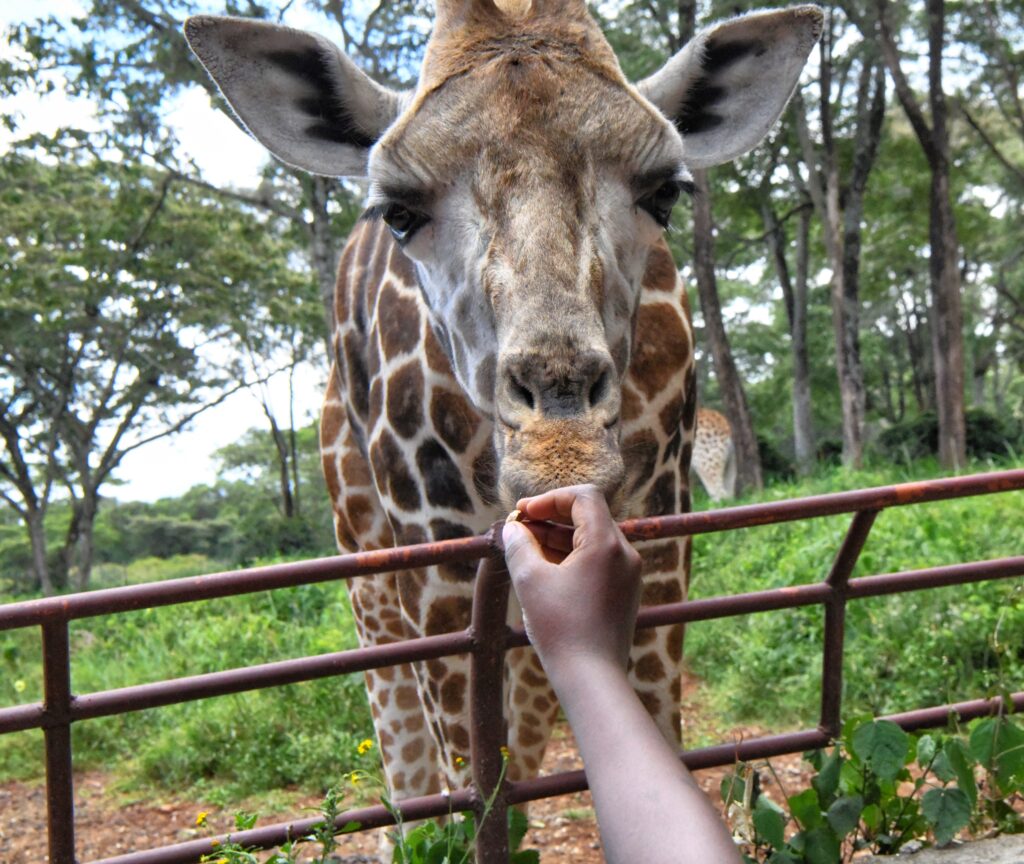
Nairobi’s Giraffe Centre is the only place in Kenya where you can get up close and personal with these magnificent creatures. A visit here will help you appreciate the beauty of this endangered animal while providing vital support for conservation efforts.
The center hosts several giraffe species from all over Africa, including Rothschild giraffes (the second most endangered subspecies), reticulated giraffes (the third most endangered), Masai giraffes, and more. Many visitors see their favorite breed – whether a reticulated or Masai –but there are so many others to discover!
Karen Blixen Museum
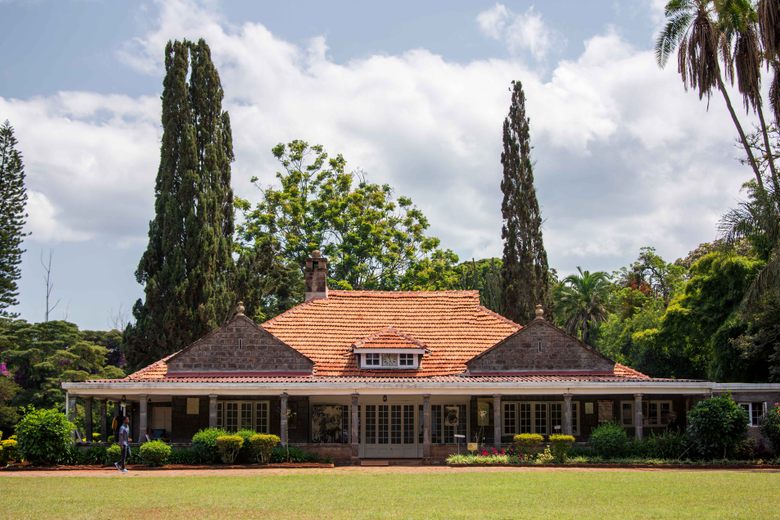
Karen Blixen Museum is dedicated to the writer Karen Blixen, born Karen Christenze Dinesen in Denmark. The museum is located in the Karen neighborhood of Nairobi, Kenya. It was opened in 2016 and is a tribute to Karen Blixen and her book Out of Africa.
The museum is home to many artifacts from Karen’s life, including furniture from Villa De Mello, where she lived with her husband, Denys Finch Hatton, and some of her personal items, such as jewelry and clothes.
Railway Museum
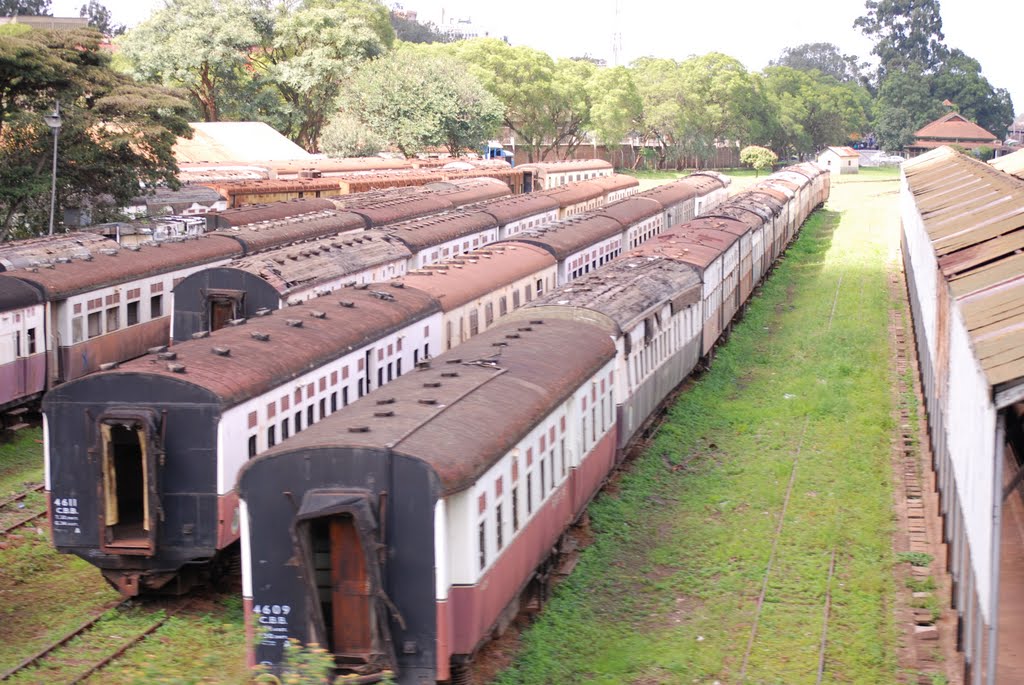
The Nairobi Railway Museum is a popular attraction in the heart of Nairobi, Kenya. The museum showcases the rich history of the railway system in East Africa, which played a critical role in the region’s development and growth during the colonial era.
The museum is home to a vast collection of historic locomotives, carriages, and other railway artifacts, many of which date back to the late 19th century. Visitors can explore the museum’s exhibits and learn about the fascinating history of the railway, from its early beginnings to its role in shaping the economy and society of East Africa.
One of the museum’s highlights is riding on a historic steam locomotive, which takes visitors on a scenic journey through the city and surrounding countryside. The experience provides a unique perspective on Nairobi’s history and heritage and is a must-see for train enthusiasts and history buffs.
The Nairobi Railway Museum is more than just a collection of artifacts – it’s a window into the past and a testament to the enduring legacy of the railway system in East Africa. Whether you are a history buff, a train enthusiast, or simply looking to learn more about the region’s rich cultural heritage, the Nairobi Railway Museum is a must-visit destination in Nairobi.
Nairobi Arboretum
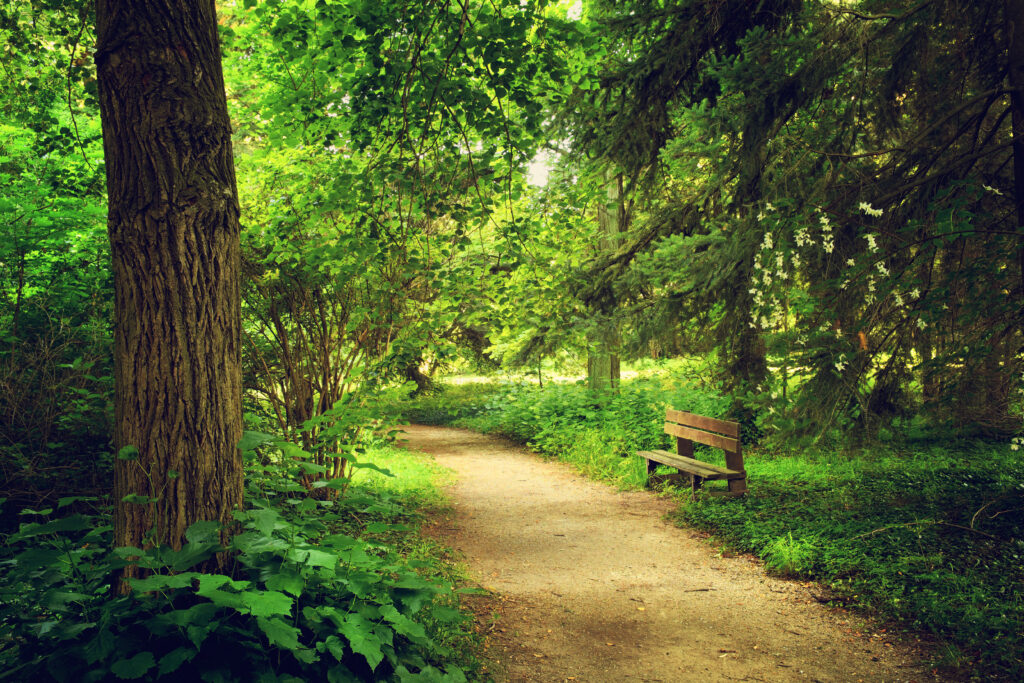
Nairobi Arboretum is a botanical garden on Ngong Road in Nairobi, Kenya. It was established in 1905 by the colonial government as a demonstration forest. The arboretum contains a variety of trees, shrubs, and flowers, including many indigenous species. The arboretum also contains an extensive collection of medicinal plants with over 300 varieties.
David Sheldrick Wildlife Trust
If you are interested in wildlife and enjoy seeing animals up close, the David Sheldrick Wildlife Trust is the place for you. It is in Tsavo East National Park, one of Kenya’s oldest and largest game reserves.
Renowned conservationist David Sheldrick founded the trust after discovering an orphaned elephant calf named Satao on the side of a road in Tsavo East National Park. The organization was created to protect Kenya’s wildlife from poachers and poaching networks. The trust has been successful at this mission, as evidenced by its success rate for raising orphaned baby elephants to adulthood: 100%.
Jeevanjee Gardens
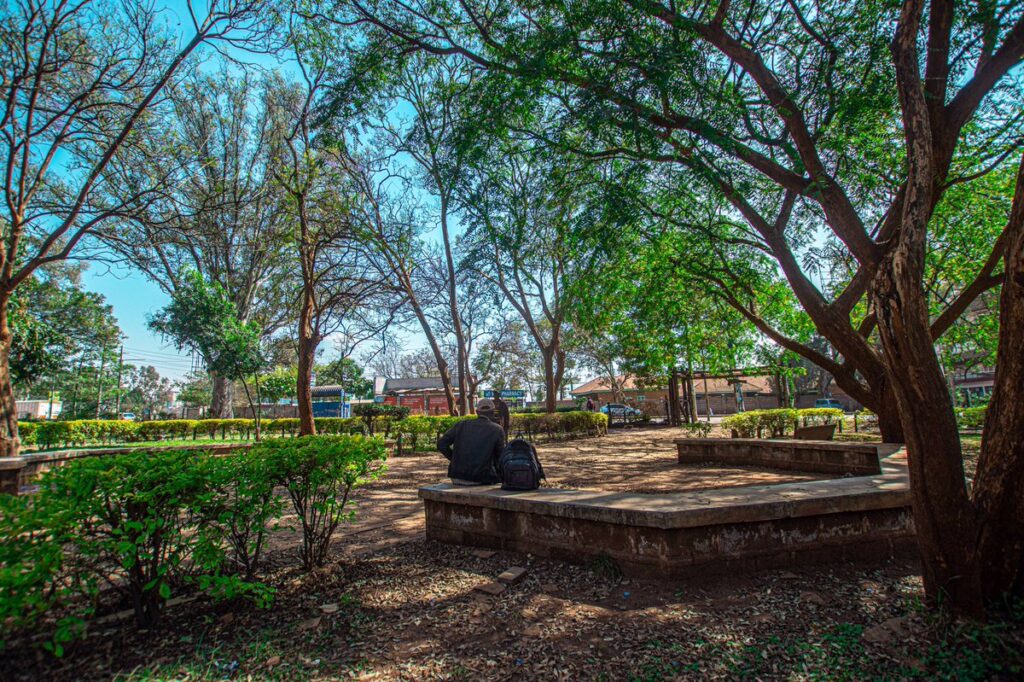
Jevanjee Gardens is a public park in the heart of Nairobi, Kenya. Established in the early 1900s, it has become a popular gathering spot for locals and tourists. It is named after a wealthy Indian merchant named Alibhai Mulla Jeevanjee, who donated the land to the city for use as a park.
The park is known for its lush greenery, beautiful flowers, and towering trees that provide shade on hot days. It is also home to a large fountain and a popular photo backdrop. In addition to its natural beauty, Jevanjee Gardens is also a hub of cultural activity. The park regularly hosts concerts, festivals, and other events showcasing Kenyan music, art, and culture.
Jevanjee Gardens is a great place to relax and unwind after a long day of exploring Nairobi. The park is centrally located and easily accessible, making it a convenient stop for visitors who want to experience a slice of Kenyan life. Whether you’re looking to attend a concert or soak up some sun, Jevanjee Gardens is a must-visit destination for anyone traveling to Nairobi.
Kenya National Theatre
Once you’ve arrived, head to the National Theatre. It’s a beautiful building that hosts plays, musicals, and other performances by both local and international artists. The theatre has been around since 1959, so it has quite a history behind it (and some serious architecture).
Once inside, you can get ready to enjoy the performance of your choice. If seeing a play is more your style, try one of the many productions they offer throughout the year, such as “The Last 5 Years”, “Kazi,” “The Wedding Party,” or “Fade.” If music is more your thing, there are live concerts from time to time too! Be sure not to miss out on these amazing shows while in Nairobi!
National Museum of Kenya

The National Museum of Kenya is a prominent cultural and research institution in Nairobi, Kenya. Established in 1910, the museum has grown over the years and now encompasses multiple locations, including the main museum in Nairobi and several other sites throughout the country.
The National Museum of Kenya houses an extensive collection of artifacts and exhibits related to the cultural, natural, and scientific history of Kenya and East Africa. Its exhibits cover various topics, from early human evolution to the rich biodiversity of Kenya’s landscapes and the cultural heritage of various Kenyan communities.
The National Museum of Kenya is also an active research institution, with a staff of scientists and researchers conducting fieldwork and research on various natural history and cultural anthropology topics.
The museum also serves as a hub for educational programming and community outreach, with various programs and resources designed to engage and educate visitors of all ages and backgrounds. Overall, the National Museum of Kenya is a vital institution that plays a key role in preserving and promoting the cultural and natural heritage of Kenya and East Africa.
Daphne Sheldrick Elephant Orphanage
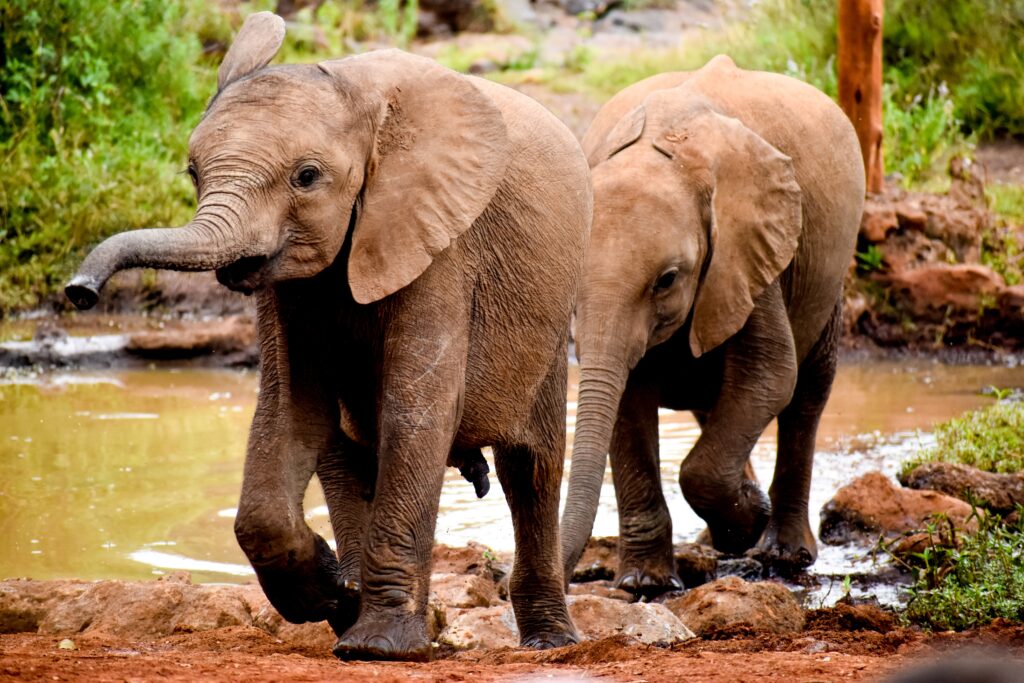
Daphne Sheldrick Elephant Orphanage, located in Nairobi, Kenya, is a unique conservation facility specializing in rescuing and rehabilitating orphaned elephants. Founded in 1977 by the late conservationist Daphne Sheldrick, the orphanage has become a globally recognized institution for saving and protecting elephants.
The orphanage is home to dozens of young elephants rescued from various parts of Kenya, many of whom are victims of poaching or human-wildlife conflict. The orphanage provides these elephants with round-the-clock care, including specialized nutrition, medical attention, and emotional support, to reintegrate them back into the wild eventually.
Visitors to the orphanage can witness firsthand the incredible work done to protect and care for these magnificent animals. In addition to observing the elephants during their daily feedings and mud baths, visitors can also learn about the challenges facing elephant populations in Kenya and the broader region.
Daphne Sheldrick Elephant Orphanage is more than just a rescue and rehabilitation center – it is a beacon of hope for the future of Kenya’s elephant population. Through its work, the orphanage is helping to ensure these incredible animals continue to thrive for generations.
Nairobi Snake Park
The Nairobi Snake Park is a popular tourist attraction and conservation center in Nairobi, Kenya. Established in 1961, the park is home to a diverse range of reptiles, including snakes, crocodiles, turtles, and other animals, such as birds and primates.
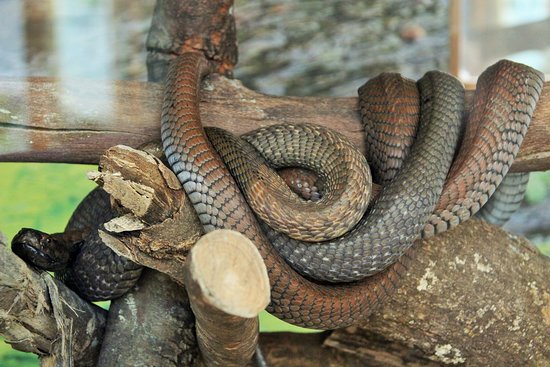
The park serves as a hub for education and conservation efforts, with various programs and resources designed to raise awareness about protecting Kenya’s reptiles and other wildlife. Visitors to the park can observe these incredible animals up close and learn about their behavior, biology, and ecology through interactive exhibits and educational displays.
One of the park’s highlights is its venom extraction program, which involves carefully extracting venom from various species of venomous snakes, including cobras and vipers. The venom is then used to create antivenom for treating snakebite victims throughout Kenya.
Nairobi Snake Park is more than just a tourist attraction – it is critical in promoting conservation and education about Kenya’s unique reptilian and wildlife heritage. Through its programs and exhibits, the park is helping raise awareness about the importance of protecting these incredible animals and their habitats for generations.
Uhuru Gardens Monument & Memorial Park
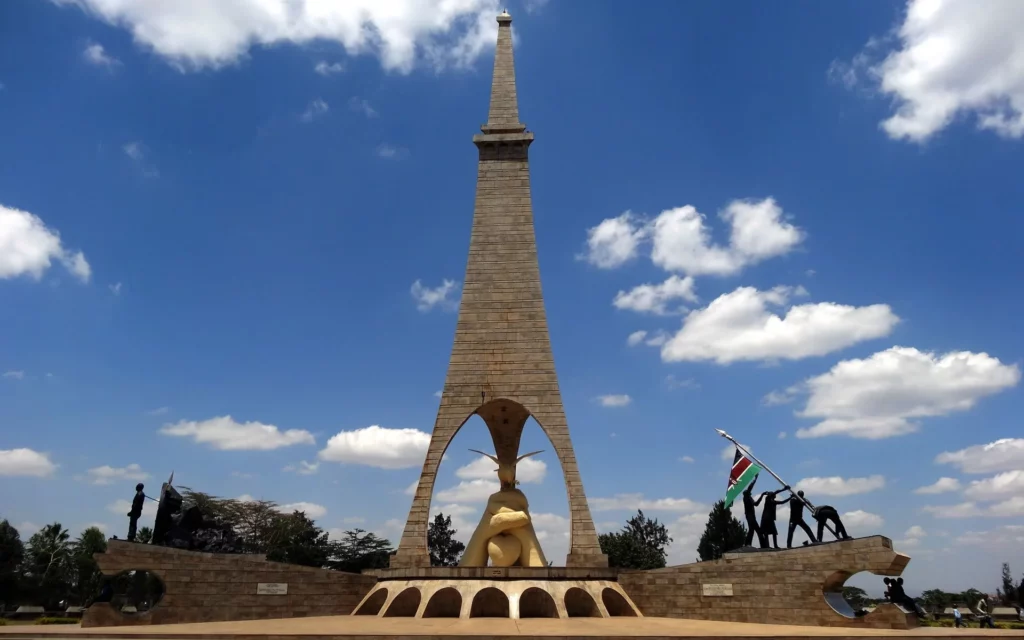
Uhuru Gardens Monument and Memorial Park are perfect for learning about Kenya’s history. The park was built in 1964 as a memorial for all who died during the Mau Mau Uprising, which lasted from 1952 to 1960 and fought for independence from British rule.
The park also features the Uhuru Monument, which stands over 100 feet (30 meters) high and symbolizes freedom from colonial rule. It houses an observation deck at its peak. You can climb up there on weekends when it’s open to visitors who want a fantastic view over Nairobi City Centre!
Besides this magnificent monument, many other things make Uhuru Gardens worth visiting: Freedom Corner holds political rallies year round; The Ngoma Dance Group performs traditional dances with their drums every Friday afternoon; There’s also an outdoor theater where plays are performed about Kenyan history; And if you love nature walks or need some time away from city life then this spot will be great for you too because there are plenty of trails around that lead through native plant species such as acacia trees while others lead up into beautiful hillsides giving views across Nairobi City Centre towards Mount Kenya range on one side while looking down onto lower-lying suburbs like Karen area on another side.
Jamia Mosque of Nairobi

The Jamia Mosque of Nairobi is a prominent Islamic center in the heart of Nairobi, Kenya. Built in 1974, the mosque is one of the largest and most important in East Africa, serving as a hub for the local Muslim community and attracting visitors worldwide.
The mosque features stunning Islamic architecture, with a distinctive domed roof and minaret that rise high above the city skyline. The mosque is adorned with intricate geometric patterns and calligraphy, creating a serene and peaceful atmosphere for prayer and contemplation.
The Jamia Mosque of Nairobi is more than just a place of worship – it also serves as a cultural and educational center for the local community. The mosque hosts various events and programs throughout the year, including lectures, seminars, and workshops on Islamic theology, history, and culture.
Visitors to the mosque are welcomed with open arms and are invited to observe daily prayers and attend educational programs. Whether you are a Muslim seeking a place of worship or simply learning more about Islamic culture and heritage, the Jamia Mosque of Nairobi is a must-visit destination.
City Market and Art Crawl in the Gigiri Neighborhood
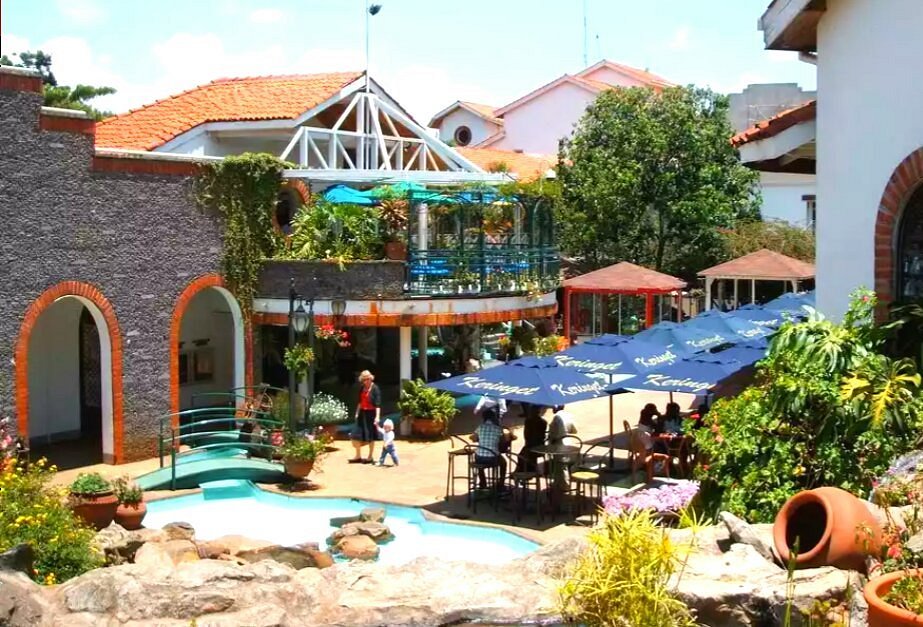
The City Market and Art Crawl in the Gigiri Neighborhood of Nairobi, Kenya, is a vibrant and lively monthly community event. The market and art crawl bring together local artists, artisans, and vendors to showcase their wares and create a festive atmosphere in the neighborhood.
The City Market is a bustling open-air market with a wide variety of locally grown produce, including fresh fruits and vegetables, meats, fish, and spices. Visitors can also browse handmade crafts, jewelry, and textiles or sample traditional Kenyan foods and snacks.
The Art Crawl is a unique opportunity to discover the vibrant arts scene in Nairobi as local artists open their studios and galleries to the public. Visitors can explore a diverse range of artwork, including painting, sculpture, photography, and mixed media, while also getting the chance to meet and interact with the artists.
If you’re looking for more than just shopping, head to Art Crawl every Thursday evening between 7 p.m.-10 p.m. Gigiri Market (Ngong Rd) until 2 am. It has become known as “Africa’s answer” to Art Basel Miami Beach since its inception in 2014, attracting thousands each month who come out in force so that they can attend this popular event!
Casinos and Night Life – Tinga Tinga, Bahati Club, and Maasai Market at Sarit Centre
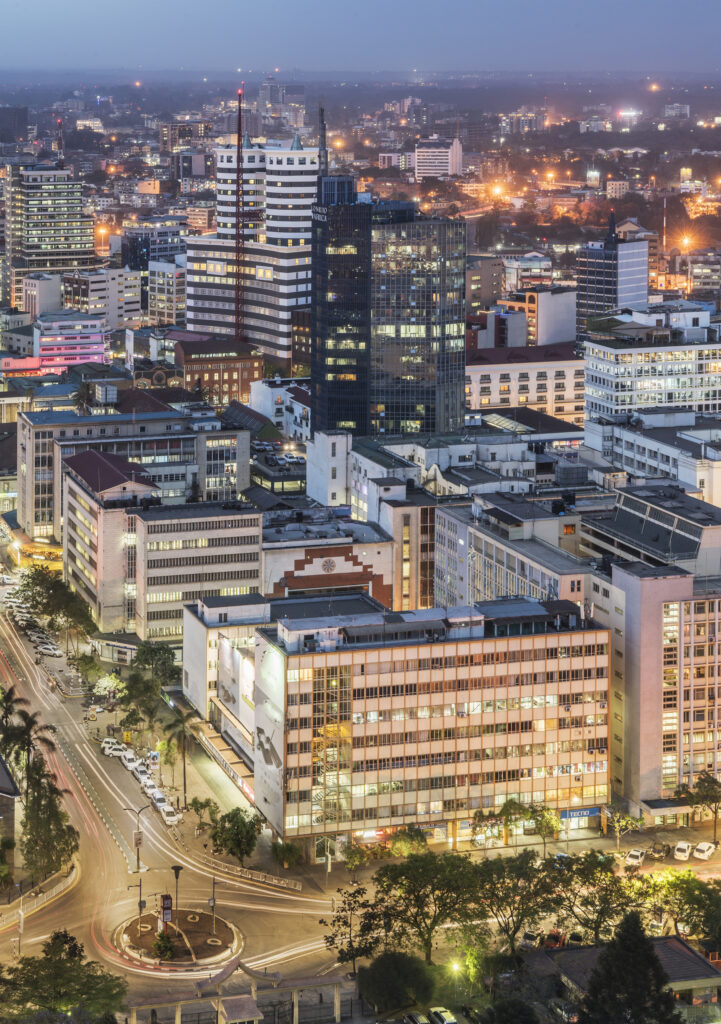
If you’re looking for a night out on the town with friends, there are plenty to choose from in Nairobi. Some of the most popular include:
Tinga Tinga – This popular nightclub offers an upscale atmosphere and great music.
Bahati Club – This club has some of the best DJs in Kenya. They also have a huge dance floor, so getting your groove on here is easy.
Maasai Market at Sarit Centre – This club has live performers as well as DJ sets throughout their evening hours. There are also various bars around this venue where you can grab drinks before or after your night out at the club!
Leave a Reply
© copyright 2024 Congologie Studios